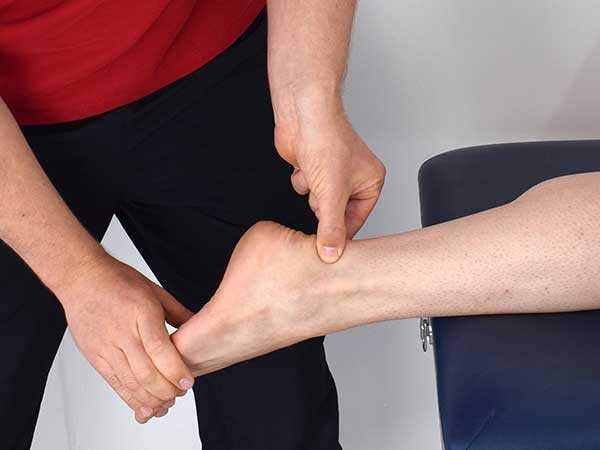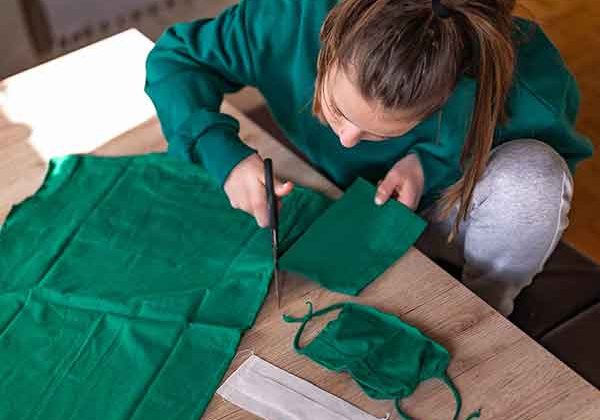No benefit from PRP treatment for patients with debilitating Achilles tendon pain
Largest clinical trial of its kind by University of Warwick finds platelet-rich plasma injections are no better than a sham injection for patients with painful Achilles Tendinopathy
Study recommends clinicians no longer use platelet-rich plasma for these patients, advising ‘it is not consequence-free’
Patients with Achilles tendinopathy, a disease of the Achilles tendon that can potentially cause significant pain, receive no benefit from being treated with platelet rich plasma (PRP) injection, a clinical trial led by the University of Warwick has found.
PRP is a treatment often used for a number of orthopaedic conditions and popularised by its use by elite sportspeople. However, this new study published in the Journal of the American Medical Association and funded by Versus Arthritis has shown that it is ineffective for the treatment of Achilles tendinopathy and recommends that it is no longer used for these patients.
Achilles tendinopathy is a degenerative condition that manifests as a stiffness or pain when bearing weight on the leg. The Achilles tendon attaches the calf muscles to the heel and is important in for raising your heel off the floor when walking or running. The tendon experiences a great deal of wear and tear during daily life. Normally, the tendon goes through a cycle of wear and repair, but in Achilles tendinopathy that cycle is broken and the tendon does not repair itself as effectively. For some people, particularly if their work requires them to be on their feet or if they do a lot of walking or running, this can cause very significant discomfort or pain.
PRP is often used after other treatments have failed, such as simple pain relief, advice, activity modification and physiotherapy.
For this randomised clinical trial, the largest of its kind, the researchers recruited 240 patients with Achilles tendinopathy, split into two groups: one received PRP treatment, while the other control group received a sham injection. The participants were then asked to complete a self-assessment of their pain, function and activity after three and six months, using the Victorian Institute of Sport Assessment – Achilles score (VISA-A) – a validated tool for assessing patients with Achilles tendinopathy.
When scores from both groups were compared, the researchers found no statistical difference between the average score of each group.
Lead author of the study Professor Rebecca Kearney of Warwick Clinical Trials Unit at the University of Warwick said: “The only reason for treating tendinopathy is if the patient is experiencing pain, as the condition doesn’t cause pain in all cases. What’s important to patients is they want a reduction in pain, to be able to do the activities they could before. We set what was a clinically important difference and that wasn’t met in the trial.
“More participants in the PRP group experienced increased pain soon after the injection, bleeding, bruising, and swelling in the area injected. These are normal things you’d associate with receiving an injection and they did get better but they show that injections into the Achilles tendon are not consequence free.
“The recommendation from this trial is that PRP should not be used to treat Achilles tendinopathy. It’s not effective, it costs money and we found some evidence that it can cause harm in the short term. There’s no evidence to continue using it for Achilles tendinopathy.”
PRP is thought to promote tendon repair through injecting a high concentration of growth factors direct to the site of degeneration, to enhance regeneration. It is made by taking the patient’s own blood, spinning it down into a high concentration in a centrifuge before injecting it directly into the area required. The expectation is that this triggers a repair process over time.
It is also used for a number of other orthopaedic issues and by professional sportspeople, but despite this there is limited evidence of its effectiveness for most conditions.
Professor Kearney adds: “There’s been an explosion in injection treatments for Achilles tendinopathy. There are other types of injections that are being used but there is the same problem that these have not been tested and evaluated in high quality clinical trials. This study does raise the question that if PRP doesn’t work, maybe some of the other commonly used injections for Achilles tendinopathy need further evaluation.
“We can’t point to one thing that causes Achilles Tendinopathy, which is why treating it becomes so difficult. That’s why we see lots of different treatments, not all of which have been properly tested.”
Caroline Aylott, Head of Research Delivery at Versus Arthritis, said: “Achilles tendionopathy can cause significant pain and prevent people from staying active. The results from this study suggest that platelet-rich plasma injections do not improve pain or function, and therefore shouldn’t be recommended as a treatment for this condition. More research is needed to ensure we find effective treatments for people who have persistent painful Achilles tendionopathy.”
‘Effect of platelet rich plasma injection vs sham injection on tendon dysfunction in patients with chronic midportion Achilles tendinopathy: a randomized clinical trial’ is published in Journal of the American Medical Association
Source: Warwick, University of
Full bibliographic information
“Effect of Platelet-Rich Plasma Injection vs Sham Injection on Tendon Dysfunction in Patients With Chronic Midportion Achilles Tendinopathy”
Authors: Rebecca S. Kearney, PhD; Chen Ji, PhD; Jane Warwick, PhD; Nicholas Parsons, PhD; Jaclyn Brown, BSc; Paul Harrison, PhD; Jonathan Young, MBChB; Matthew L. Costa, PhD; for the ATM Trial Collaborators
Journal: JAMA
DOI: 10.1001/jama.2021.6986





